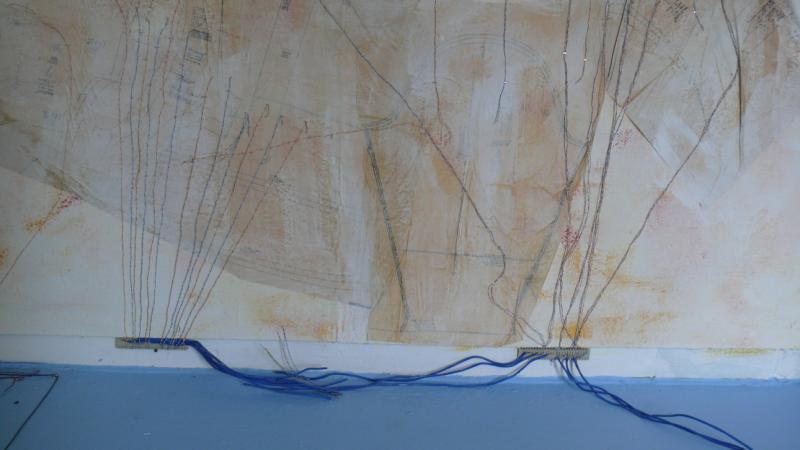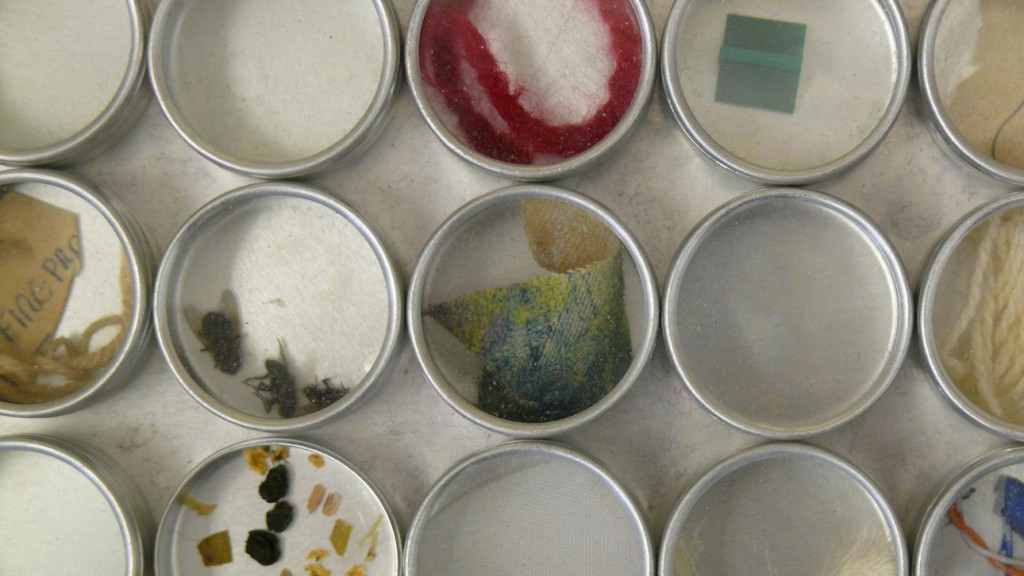1.5 Vertebrae, Part 2 – Objects
“In a culture like ours, long accustomed to splitting and dividing all things as a means of control, it is sometimes a bit of a shock to be reminded that, in operational and practical terms, the medium is the message. This is merely to say that the personal and social consequences of any medium — that is, of any extension of ourselves — result from the new scale that is introduced into our affairs by each extension of ourselves, or by any new technology.” (Marshall McLuhan)

Overview
The title, Vertebra, Part 2: The Skinning of Memory (VP2), defines the overall intent of this work, specifically regarding society’s relationship to technology and its associated objects.
The Vertebrae
The term vertebrae in the title references the human body but also technology’s ubiquitous relationship to society.
The vertebrae makes up the central structural framework of the human body (the vertebral column) which encases and protects the spinal cord and runs from the cranium down to the pelvis, and to that of the tail – linking us back to our evolutionary past.
The term vertebrae – and by association the vertebral column – can also suggest how technology has come to act as the primary infrastructure (backbone) to society, encapsulating the wired network which transmits and exchanges information globally; how these material components are used to transmit and receive electronic and digital information hidden below the surface – under streets, behind walls, and within telecommunication objects themselves: similar to nerve ending under the human skin.
Marshall McLuhan in his seminal work Understanding Media spoke of how the electronic medium could be understood as an extension of our central nervous system, in that:
“This is merely to say that the personal and social consequences of any medium— that is, of any extension of ourselves—result from the new scale that is introduced into our affairs by each extension of ourselves, or by any new technology. For media, as extensions of our physical and nervous systems, constitute a world of biochemical interactions that must ever seek new equilibrium as new extensions occur” (16).
The Skinning of Memory

Image 10: VP2, Naccarato, 2009, Detail: Objects – glass containers, dead flies, red wool, piece of canvas, material fragments
The use of the phrase Skinning of Memory infers that something is being revealed about memory, that memory resides beneath the surface, and to reveal its existence, an intervention is required.
Furthermore, the term skinning is usually used in reference to that of an animal being skinned in order to expose their body parts in preparation for their consumption. In the case of VP2, it is the objects, which are being physically skinned. For example, the shells of the TV monitors and electronic devices have been removed, exposing their inner electronics parts, the place where memory is stored, consumed and disseminated – electronically and digitally.
Historically, objects were able to retain and transmit information – as a sort of memory imprint – about their own materiality, about how they may have been constructed, and about what their intended sociocultural purpose may have been. For example, a knife, a hammer or even a bicycle, have built-in memory imprints, as described above, which are visible and obvious.

Image 12: VP2, Naccarato – Top Right Floor, Detail – Objects of Coaxial Wire – whole, stripped, wood frame, and painted floor
As Vilém Flusser explains in his essay On Memory (Electronic or Otherwise) that,
“a stone knife can preserve information about ‘how to cut’ for tens of thousands of years. Information stored within hard objects creates informed objects that constitute our ‘material culture’. The disadvantage is that such informed objects (tools) are used not only as memory supports but also as data banks: the knife not only keeps information on ‘how to cut’ but also is used for cutting” (397).
The Objects

Image 14: VP2 -Center, Detail – two hollow glass containers covering small mounds of sugar and in the far background, the right side wall of VP2, showing a simulated construction of spinal-like cord system made up of
sewing paper patterns, internet cable and wiring and acrylic paint.
However, with electronic and digital objects, the extraction of their intended purpose is much more complex, elusive and paradoxical. Objects such as a TV set, cell phone or computer require a prior knowledge of their intended functional and interactive purpose.
The functional memory of electronic and digitally-based objects cannot be accessed directly, but are layered and hidden from view, either through encoded software, hard drives, ram, digital chips, magnetic tapes, cables and fibre optics, or wireless transmissions such as WiFi, and microwaves.
Furthermore, because technological objects are mass reproduced, their obvious purpose may be hidden and abstracted from their original source and intention (Benjamin sec. 2, par. 1). This abstraction creates the possibility to store information via memory devices, constructing a kind of Cartesian universal truth, one which can be accessed uniformly and universally by the user. At the same time, this data can be manipulated by its designers to alter the way we come to relate to personal and socio-cultural identities.
In her essay Memory as Concept in the Design of Digital Recording Devices, Lina Dib points out that, we are “no longer bound to the organism or moment itself, memories and identities are to be sustained in artificial environments to be later used to extend the finite life of the person from which they came” (42).
Benjamin, Walter, The Work of Art in the Age of Mechanical Reproduction, Illuminations, Web. 2010, 2018 PDF,
Dib, Lina. Memory as Concept in the Design of Digital Recording Devices, Altérités, vol. 5, no 1, 2008 : 38-53. Web. 2010, 2018 PDF
Below are links to texts related to The Skinning of Memory (VP2) Installation that were published as part of my MFA Thesis, 2010. Specific segments have been revised and updated for this post. John Naccarato, 2022
